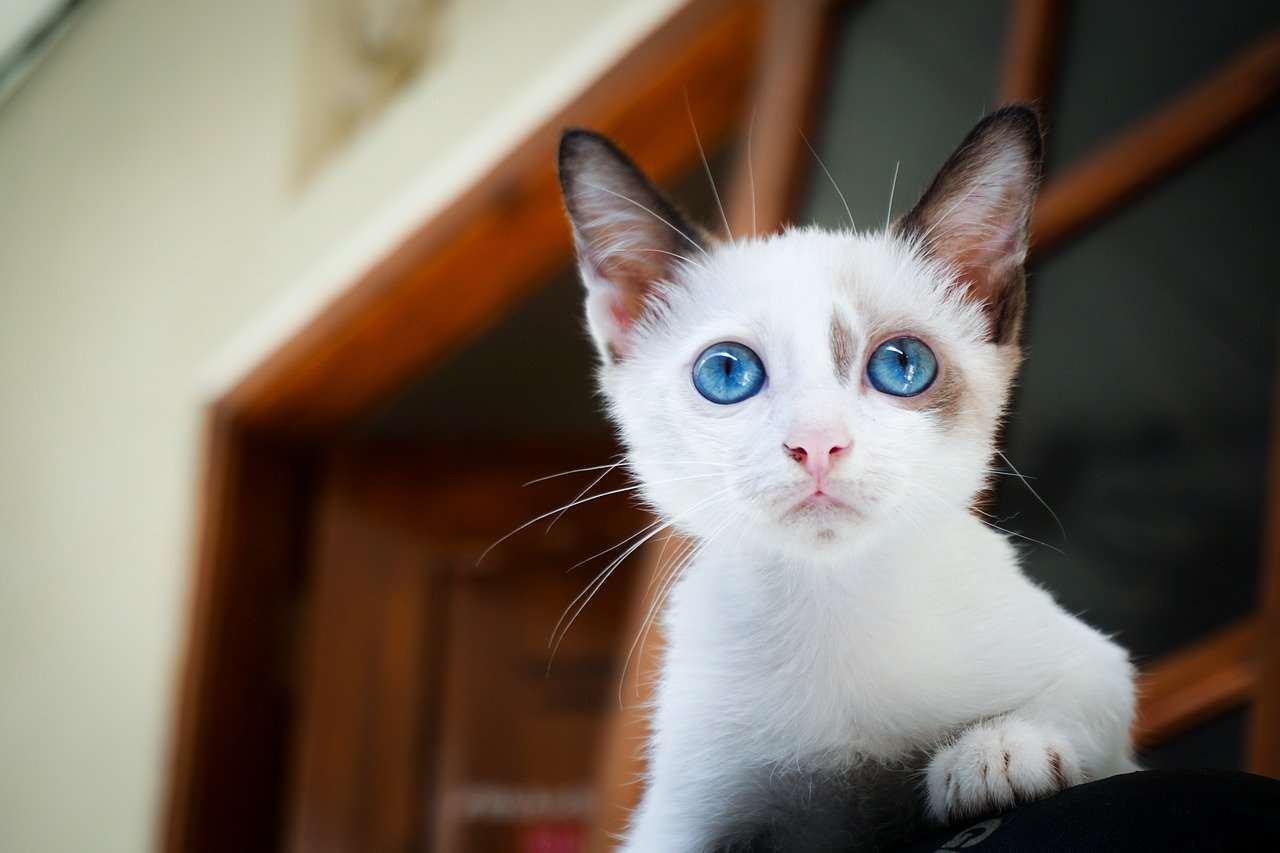Kitty Cat Kidnapping!
- August 30th 2022
- Public Safety
- Animal Control Pets Sanford Police Department

Or, How to avoid being adopted by a neighborhood cat!
by Lauren Masellas, Sanford Animal Control Officer
One day, you are enjoying coffee on the deck, the next you are fending off the advances of a neighborhood cat! Is this cat lost? Has that irresistible face been abandoned?! Or is he just a wise guy who is playing you for a free meal?
Well, let’s take an emotional step back at look a little closer. The cat is friendly. The cat appears healthy. The cat is reasonably clean. Chances are you are facing a wise guy. As hard as it may be, because this wise guy has the patience of a saint and the persistence of a two year old, you need to walk away!
Okay…you just can’t. This wise guy has you in his/her thrall. Next step; the ol’ paper collar trick! Take a fairly stiff piece of paper, write “is this cat owned” on it in permanent marker and wrap it – not too tight- around the cats neck and tape the ends together, just like a collar. Then wait for a response. I had one cat that came back with THREE “Yes’” on the same collar! That is one smart cat! This is the most common scenario for “stray cat” complaints.
The second is the lost cat. Lost cats may look a bit scruffy and are usually thin as they do not know how to fend for themselves very well. They may be a bit shy but are usually approachable with patience and treats. It is so important to have some sort of identification on your cats! And since collars and cats are a challenging combination, I strongly recommend microchipping. It is easy, permanent and fairly inexpensive. But you have to register the chip! It is not magic and does not come “pre-loaded” with your contact information. Should you wonder if a cat that has been visiting you is lost, call your animal control officer. I will come check the cat for a chip and take a picture. Hopefully I can match him/her up with one from my very thick folder of missing kitty reports.
The least common is the feral cat. Think raccoon in a cat suit! You will rarely see a feral cat, and usually only for the split second it takes them to bolt to safety. They will often be pretty scruffy looking and tend to stick to a defined territory along with other feral cats which form a loosely defined “colony”. They will defend this area and colony from all other cats, maintaining only the number of cats the territory can support based on available resources. If you start seeing a feral regularly, unless you are feeding/supporting the colony, it may be an indicator that the animal is sickly and no longer able to support itself. In that case, a call to Animal Control (207-324-3644 X 223) should be made.
Please! If you have a concern about a cat, call Animal Control. Do not kidnap your neighbors’ cats. Do not try to rehabilitate a sick or injured stray cat, unless you are a veterinarian! If you are interested in helping our feral cats and/or want information on controlling the feral cat population, just give a call!
On a side note: Never bring stray cats, or any stray animal into your home. These animals may have been exposed to or carry any number of diseases that you could unwittingly then expose your animals or family to.






